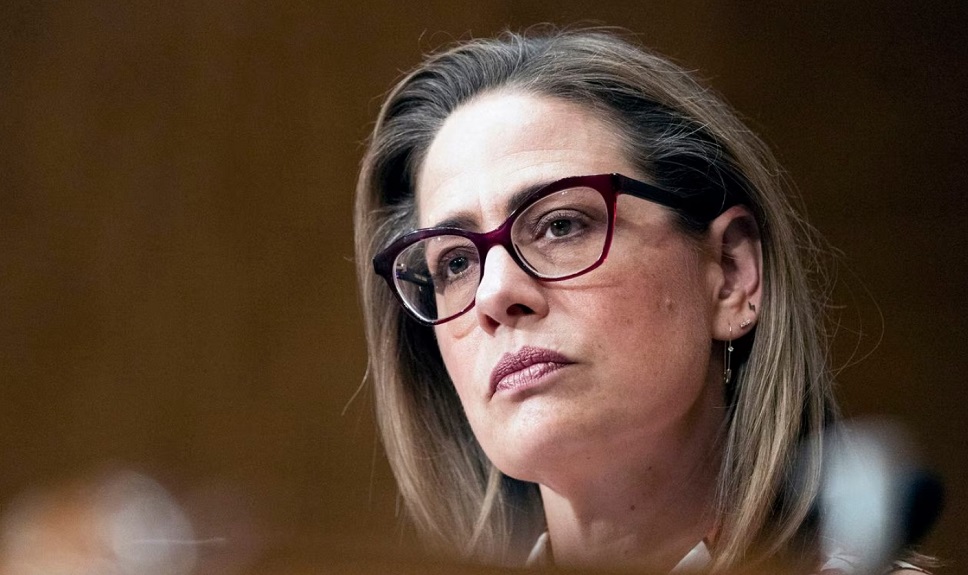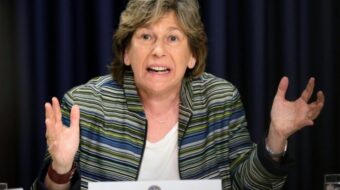
The Federal Aviation Administration has more problems staffing U.S. air traffic control towers than it admits, and its officials are at odds over how to solve the dilemma, a new Inspector General’s report shows. But the report doesn’t surprise the controllers’ union, NATCA.
It is, however, a problem for the millions of people who take to the nation’s skies every day. Lack of controllers means longer waits on airport tarmacs, among other difficulties.
The problems go far beyond just the current controller shortage. They include training and scheduling, especially for experienced controllers who can direct aircraft at the nation’s busiest airports, such as Chicago’s O’Hare, Atlanta’s Hartsfield, Los Angeles International, and in New York.
The problems concern the National Air Traffic Controllers Association, which publicized the IG’s report.
“There are currently 1,200 fewer fully certified controllers today compared to ten years ago,” said NATCA President Rich Santa after the union posted the IG’s report on NATCA’s website. “FAA’s flawed staffing model and inconsistent hiring have resulted in new hires not keeping pace with attrition over the past decade. The status quo is no longer sustainable.”
NATCA, under Santa and his predecessors, has been jousting with the FAA about the controller shortage for years. The system is down some 2,000 controllers overall, including trainees, from its authorized strength. The more critical shortage, the IG says, is in the experienced controllers.
That’s because the agency hasn’t really settled on a good training plan for new controllers, which would then let it transfer more-experienced ones to the busier airports where they’re most needed. FAA “needs a long-term commitment to hiring and training,” the Inspector General found, “FAA cannot ensure it will successfully train enough controllers in the short term.”
Congress is also concerned about the controller shortage and includes one measure to start solving it in the House’s FAA Reauthorization Bill, which the Republican-run Transportation and Infrastructure Committee cleared on a bipartisan 63-4 vote just before lawmakers’ Independence Day recess. The panel wants planning to start for a second national controller training center to supplement the current one in Oklahoma City.
That may not be enough. There are senatorial hang-ups, too, which aren’t in Assistant IG Nelda Smith’s report. The Air Line Pilots Association and More Perfect Union say the senatorial hang-ups’ names are Kyrsten Sinema, Ind.-Ariz., and John Thune, R-S.D. They’re concerned about a pilot shortage. Their solution: Have lesser-trained pilots guide the biggest, most-complex planes.
In plain English, that means with lesser-trained—or no—controllers in the towers and TRACONs, waits are longer on the ground and the skies could be less safe for passengers.
The FAA says critical facilities, such as airport towers and terminal radar approach control (TRACON) towers are supposed to have a minimum of 85% of their trained controller and supervisor slots filled. But 20 of the 26 critical facilities Smith surveyed flunked.
New York’s TRACON was at 54%, Chicago’s was at 57% (eight of 14 authorized). O’Hare’s tower had nine of its 13 authorized controllers (69%). In all towers, no more than 30% of controllers are supposed to be trainees. The towers controlling LaGuardia and JFK airports in New York City had double that share.
The pandemic didn’t help. It not only virtually shut down new controller training at FAA’s center in Oklahoma City for two years, but many of the instructors—retired controllers—refused to come back after it reopened, citing the risk of coronavirus spread in its close quarters.
A chart in the IG’s report shows the overall controller shortage. The FAA needs to get its act together, and the FAA reauthorization bill the House panel OKd is a start on that, said Santa.
“It would require the Federal Aviation Administration (FAA) to revise its long-flawed Controller Workforce Plan and to set its hiring target for new air traffic controller trainees to the maximum number able to be trained at the FAA’s Academy in Oklahoma City, while continuing to hire experienced controllers, for each of fiscal years 2024-2027. This is an essential step in what must be a comprehensive approach to improving controller staffing throughout the system,” Santa explained.
Over in the Senate, ALPA and Faiz Shakir, executive director of the pro-worker group More Perfect Union say Sinema and Thune are a problem, too. Shakir says Sinema is holding up the Senate version of the FAA bill “unless it includes her proposal to require less training for airline pilots.”
When the pandemic hit, the $25 billion the federal government funneled to the airlines was conditioned—thanks to the Association of Flight Attendants’ President Sara Nelson—on no layoffs. But the airlines found a loophole: They offered buyouts instead, and pilots took them.
Now air traffic is approaching pre-pandemic levels, the IG’s report says. It’s exceeding them in Anchorage, Alaska, and Albuquerque, N.M. And the airlines face a pilot shortage. But rather than bring the former pilots back, they want to train new ones, who are greener, and who cost less in pay and benefits, Shakir adds.
ALPA and the organization are urging constituents, pilots and flyers, to write to senators objecting to the two senators’ scheme. Shakir says they’re stalling the FAA bill because the airlines want more profits—and, in Sinema’s case, airlines gave $150,000 over the last two election cycles to her campaign.
The Senate’s FAA bill “contains multiple anti-safety provisions that would introduce even more risk into the U.S. aviation system,” ALPA President Jason Ambrosi says on the union website. “Despite a 99.8% reduction in fatalities, some special interests are trying to change the law to lower the bar on pilot training, which would introduce even more risk and potential disruptions. Now is not the time to lower safety standards.”
“The bill Sinema is blocking would not only improve aviation safety, but it would also improve consumer protections and regulate airline junk fees. No wonder corporate airlines are rooting for Sinema to team up with Republicans to block it,” More Perfect Union’s Shakir concludes.
We hope you appreciated this article. At People’s World, we believe news and information should be free and accessible to all, but we need your help. Our journalism is free of corporate influence and paywalls because we are totally reader-supported. Only you, our readers and supporters, make this possible. If you enjoy reading People’s World and the stories we bring you, please support our work by donating or becoming a monthly sustainer today. Thank you!










